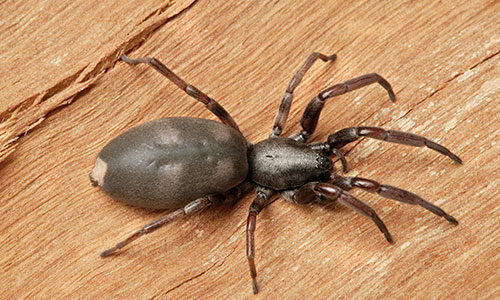Understanding White-tail Spiders in New Zealand
The mention of white-tail spiders in New Zealand often evokes a mix of fear and misinformation. These distinctive arachnids have garnered a reputation that sometimes overshadows the actual facts about their behaviour and the effects of their bites. Found across homes and gardens in various regions of New Zealand, it’s crucial for residents to understand the truth behind these spiders.
This page aims to separate fact from fiction, debunk common myths about white tail spiders, provide essential white tail spider safety tips, and explain how Flick Pest Control offers reliable professional spider control residents can trust to keep their homes protected.
White-tail Spiders: The Facts You Need to Know
What is a White-tail Spider? Identification & Characteristics
The white-tail spider identification is relatively straightforward once you know what to look for. These spiders are medium-sized, typically ranging from 1 to 2 cm in body length, with females being larger than males. They are dark grey to black, cylindrical in shape, and often have a distinctive white or off-white spot or stripe on the tip of their abdomen, which gives them their name. They are not native to New Zealand, having been introduced from Australia.
Regarding white tail spider habitat, they are nocturnal hunters and free-ranging, meaning they don’t build webs to catch prey. Instead, they actively wander in search of other spiders, which are their primary food source. This habit often leads them into homes, where they might be found in dark, secluded areas like under furniture, in clothing, or within bedding.
White-tailed Spider Bite Symptoms: What to Expect
The most significant concern surrounding these spiders revolves around white-tailed spider bite symptoms. While media sensationalism has sometimes exaggerated their impact, it’s important to understand the typical effects. An initial bite is often described as a sharp sting or prick, similar to a bee sting. Common, mild white-tailed spider bite symptoms include localised pain, redness, mild swelling, and itching at the bite site. These symptoms usually resolve within a few days.
Debunking the Necrosis Myth: A persistent myth suggests that white-tail spider bites commonly cause severe ulceration or necrosis (flesh-eating disease). However, extensive scientific research and medical consensus in New Zealand and Australia overwhelmingly indicate that severe skin lesions are exceptionally rare and are usually linked to secondary bacterial infections or other underlying conditions, not directly to the spider venom itself. Most bites result in minor, localised irritation. While it’s natural to wonder, are white tail spiders dangerous?, for most people, their bites cause only mild discomfort.
If you experience unusual or worsening symptoms, signs of infection (increased redness, pus, fever), or have concerns, it’s always best to seek medical advice. Proper spider bite treatment that NZ residents can receive for a white-tail bite often involves simple first aid and monitoring for secondary issues.

Dispelling Common Myths About White-tail Spiders
Let’s address some of the widespread myths about white tail spiders that often cause unnecessary alarm:
- Myth 1: White-tail spiders actively hunt humans.
- Fact: White-tail spiders are not aggressive towards humans. They typically bite defensively when they feel threatened or are accidentally trapped against the skin, such as when someone rolls over on them in bed or puts on clothing they are hiding in. They do not seek out humans to bite.
- Myth 2: Their bites always cause severe ulceration or flesh-eating disease.
- Fact: This is the most pervasive and inaccurate myth. As mentioned, severe skin necrosis is extremely rare and, when it does occur, is almost always due to secondary infection or other medical factors, not the direct effect of white-tail spider venom. Most bites cause only localised irritation.
- Myth 3: White-tail spiders are highly aggressive.
- Fact: These spiders prefer to flee when disturbed. They are hunters of other spiders, not humans, and will only bite if cornered or crushed.
- Myth 4: White-tail spiders are native to New Zealand.
- Fact: They were introduced to New Zealand from Australia, likely in the late 19th or early 20th century.
White-tail Spider Safety Tips & Prevention
Understanding the facts allows for more effective prevention and peace of mind. Here are some crucial white tail spider safety tips:
Preventing White-tail Spiders in Your Home
- Seal Entry Points: Inspect your home for cracks and gaps in walls, around windows and door frames, and in foundations. Seal these to prevent spiders from entering.
- Reduce Clutter: Keep your home tidy, especially in storage areas, under beds, and in corners. Spiders thrive in undisturbed, cluttered spaces.
- Regular Cleaning: Vacuum regularly, paying attention to skirting boards, behind furniture, and inside cupboards.
- Remove Food Sources: Keep your home free of other insects, as these are a primary food source for white-tail spiders.
- Shake Items Out: Before putting on clothes, towels, or shoes that have been left on the floor or in dark areas, give them a good shake to dislodge any hidden spiders.
- Use Screens: Ensure window and door screens are intact to prevent spiders from crawling in.
What to Do If You See a White-tail Spider
- Stay Calm: If you encounter a white-tail spider, there’s no need to panic.
- Safe Removal: The safest way to remove a spider is to place a glass or jar over it, slide a piece of paper underneath, and then release it outdoors.
- Avoid Direct Handling: Never try to catch or kill a spider with your bare hands, as this increases the risk of a defensive bite.
First Aid for a White-tailed Spider Bite
While bites are typically mild, knowing proper spider bite treatment guidelines is important:
- Clean the Bite: Immediately wash the bite area thoroughly with soap and water.
- Apply Cold: Place a cold pack or ice (wrapped in a cloth) on the bite to help reduce swelling and pain.
- Pain Relief: Over-the-counter pain relievers, such as paracetamol or ibuprofen, can help manage discomfort.
- Monitor: Keep an eye on the bite site for any signs of infection, such as increased redness, swelling, warmth, pus, or if symptoms worsen.
- Seek Medical Advice: If symptoms persist, worsen, you suspect an infection, or experience an allergic reaction (e.g., difficulty breathing, widespread rash), seek medical attention promptly.

When to Call for Professional Spider Control in NZ
While personal vigilance and safety tips are crucial, sometimes a more robust solution is needed. If you are experiencing a persistent or significant spider infestation in NZ, or if white-tail spiders continue to appear despite your best efforts, it’s time to consider professional spider control in NZ.
Professional intervention ensures that the infestation is properly identified, treated effectively, and preventative measures are put in place for long-term peace of mind.
Why Choose Flick Pest Control for Spiders?
At Flick Pest Control, we understand the concerns that come with white-tail spiders. As your trusted local experts, we offer:
- Local Expertise: Our technicians have extensive knowledge of spider behaviour and effective spider control specific to your region.
- Safe & Effective Solutions: We use environmentally responsible and low-risk treatments that are safe for your family and pets.
- Proven History: With over 100 years of experience, Flick has a long-standing reputation for reliable pest management.
- Comprehensive Approach: We not only treat existing infestations but also advise on long-term prevention strategies, including our Home Protection Plans for ongoing peace of mind.
Ready for a Spider-Free Property?
Don’t let the fear of white-tail spiders disrupt your peace of mind in New Zealand. By understanding the facts, implementing safety tips, and knowing when to call the experts, you can significantly reduce your risk.
For effective, reliable, and safe spider control that New Zealand residents can count on, contact Flick Pest Control today. Call us or request a quote online for a comprehensive solution.
Enjoyed this article?
If you found this article helpful, sign up for our free Quarterly Newsletter to receive all our tips and tricks on pest control and disinfection.
Sign Me Up!